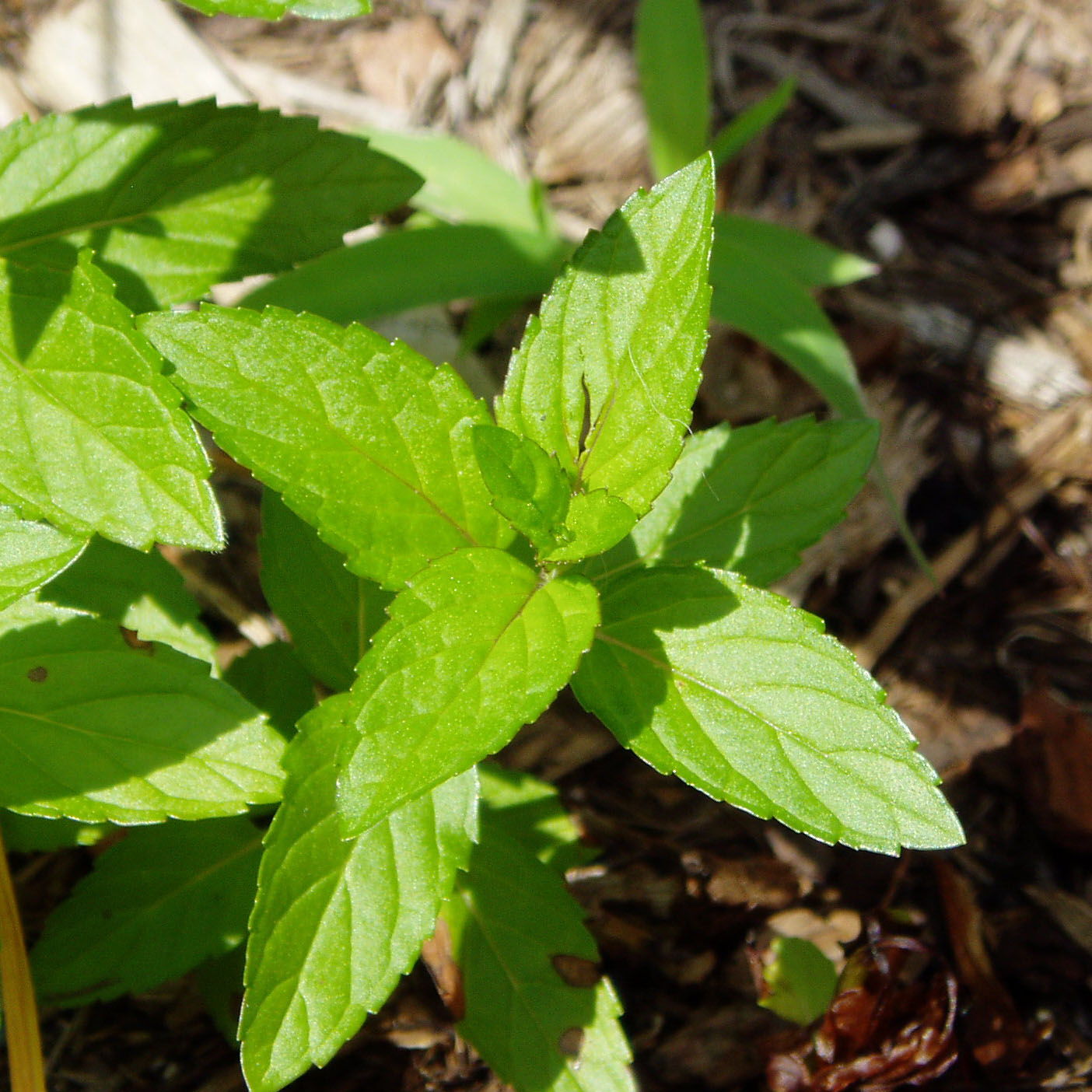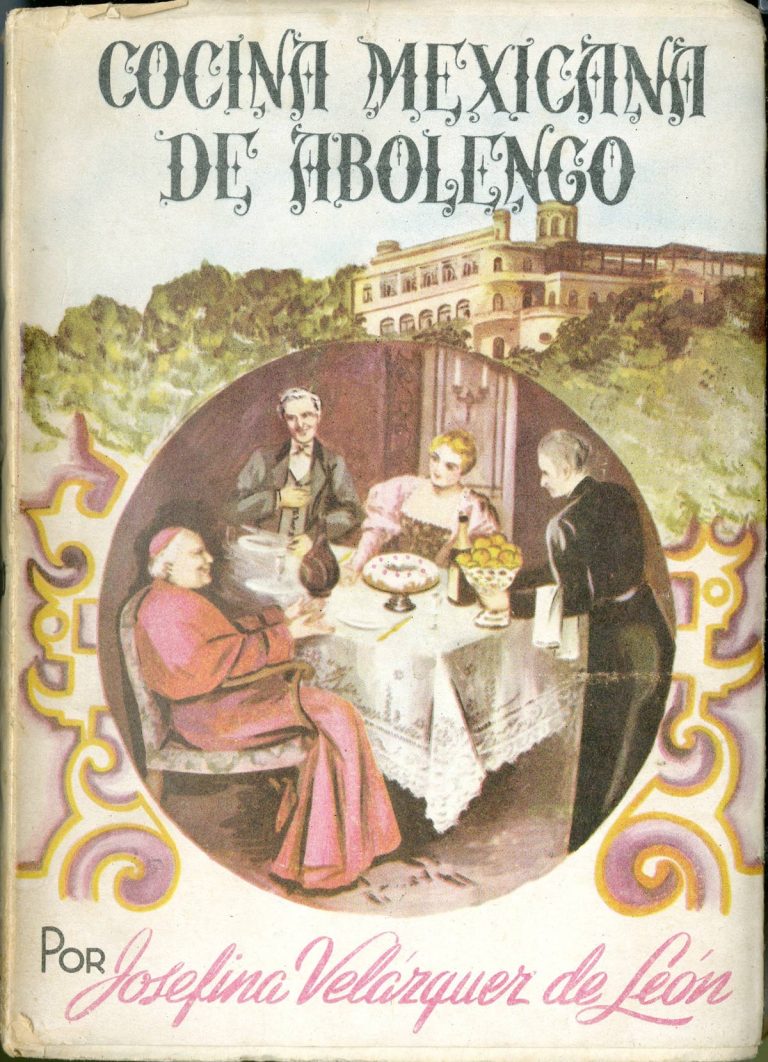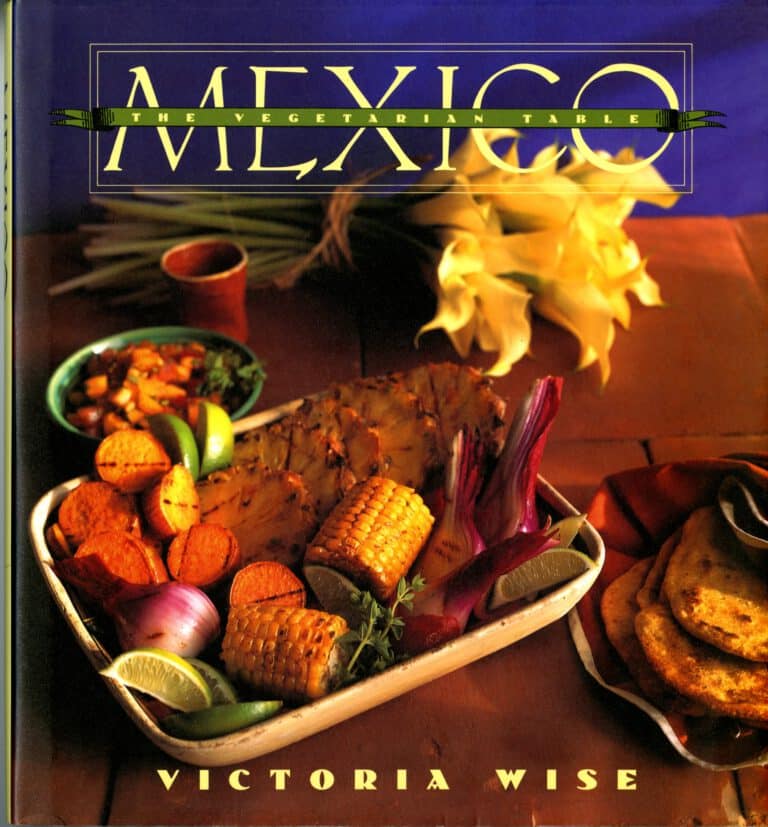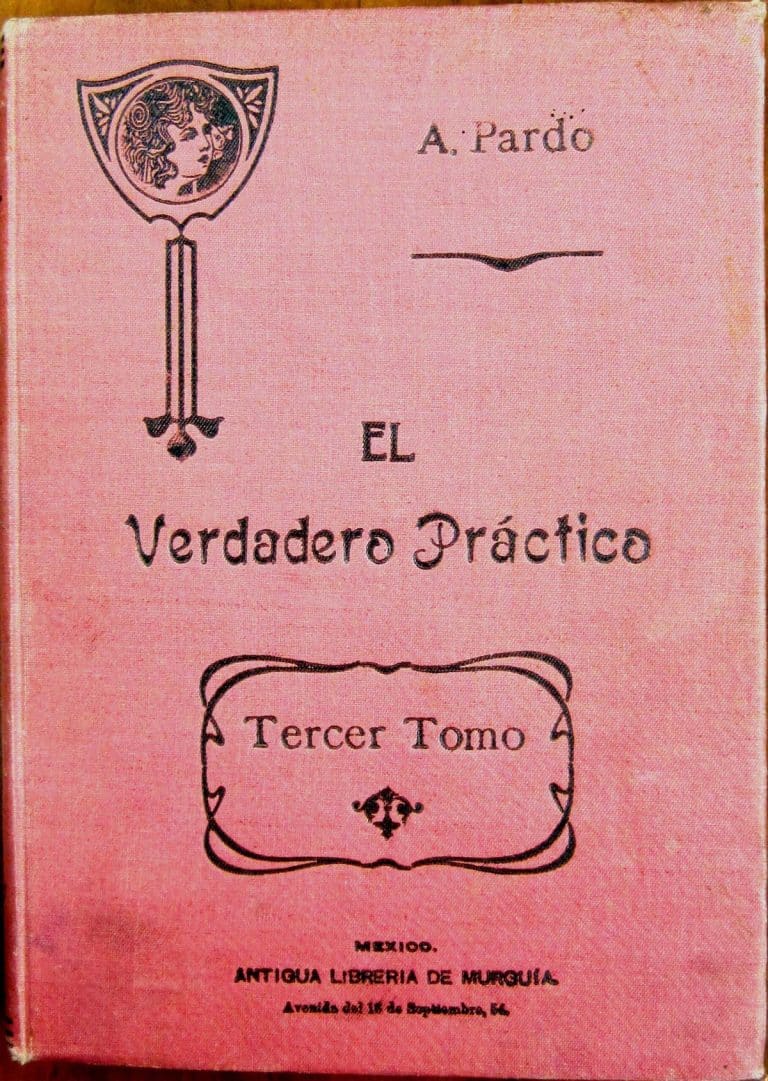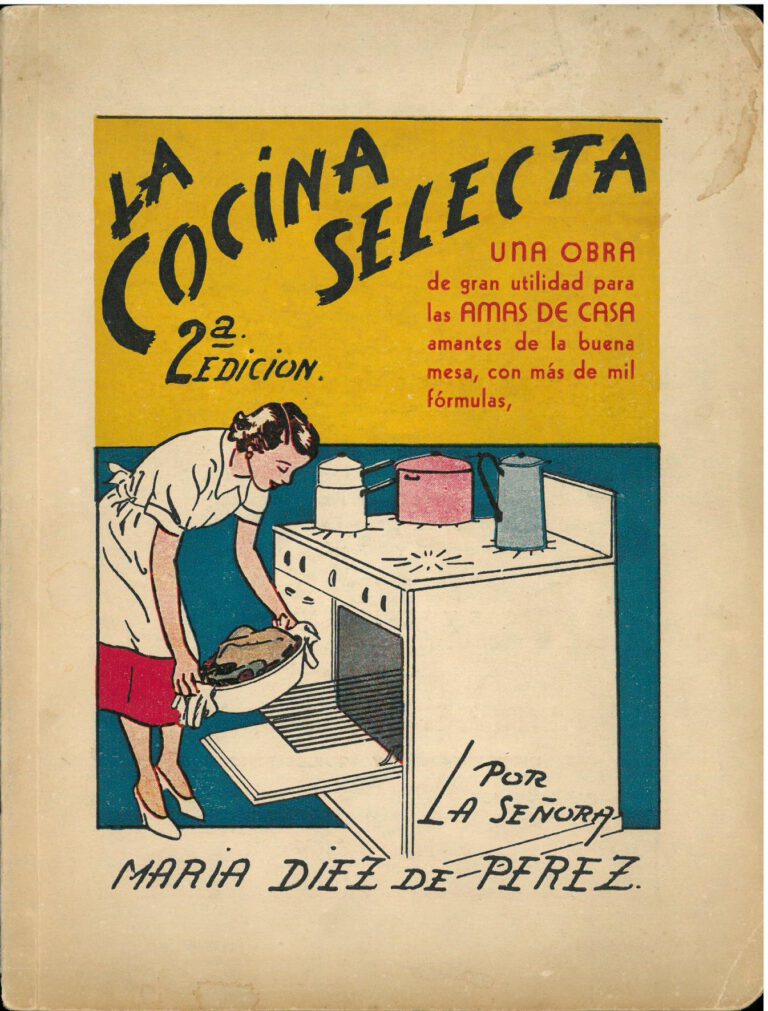Diccionario del Hogar (1901-1904) – Truchas en Salsa Verde / Trout in Green Salsa
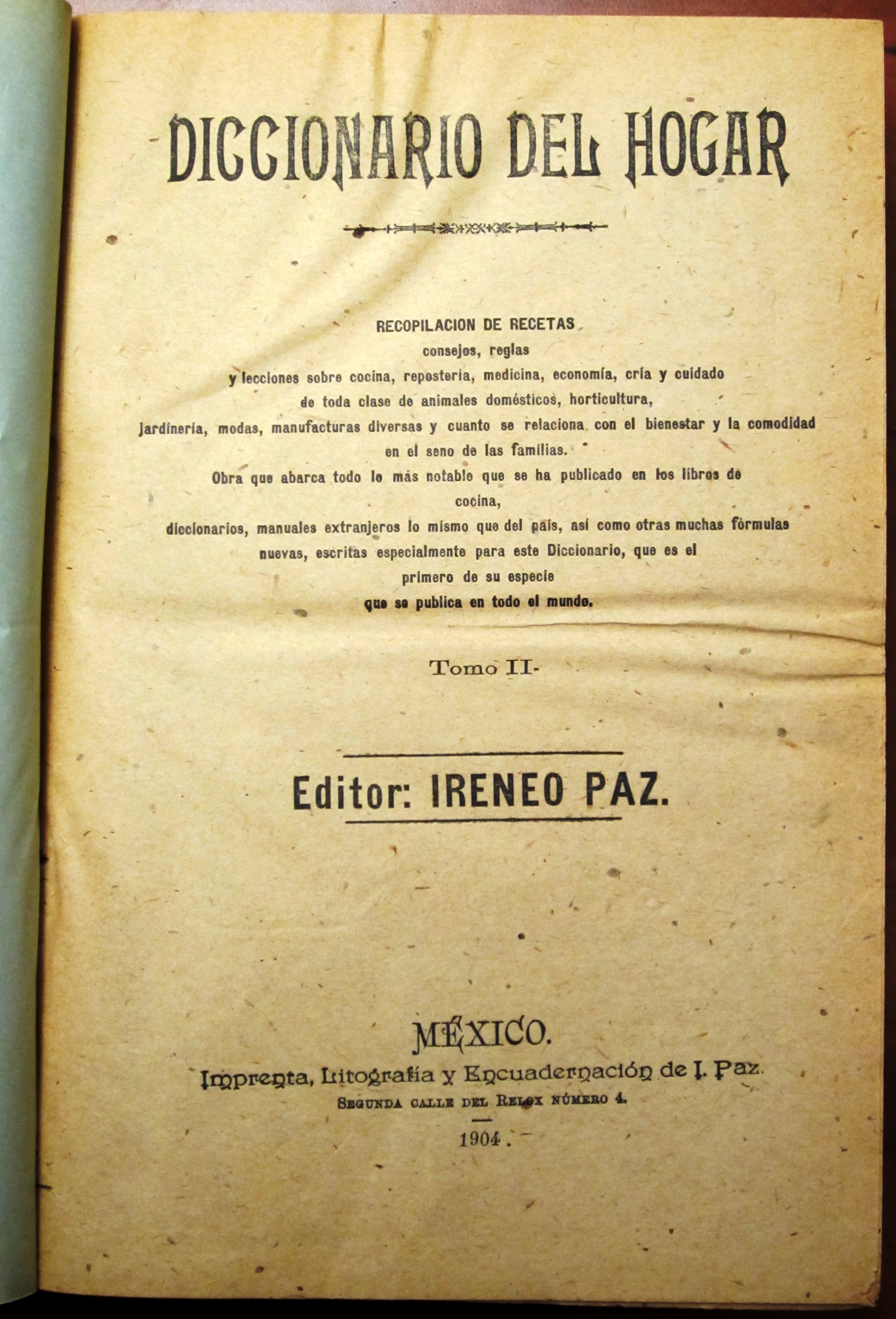 Paz, Ireneo. Diccionario del hogar : recopilación de recetas, consejos, reglas y lecciones sobre cocina, reposteria, medicina, economia, cria y cuidado de toda clase de animales domésticos, horticultura, jardineria, modas, manufacturas diversas y cuanto se relaciona con el bienestar y la comodidad el seno de las familias … México : Imprenta, litografía y encuandernación de I. Paz, 1901-1904. [TX716.M4 D53 1901]
Paz, Ireneo. Diccionario del hogar : recopilación de recetas, consejos, reglas y lecciones sobre cocina, reposteria, medicina, economia, cria y cuidado de toda clase de animales domésticos, horticultura, jardineria, modas, manufacturas diversas y cuanto se relaciona con el bienestar y la comodidad el seno de las familias … México : Imprenta, litografía y encuandernación de I. Paz, 1901-1904. [TX716.M4 D53 1901]
Last week’s post introduced Ireneo Paz’s Diccionario de Hogar… (Dictionary of the home…), issued between 1901 and 1904, as well as couple of recipes from volume 1. This week’s recipe from volume 2 illustrates one of the advantages of cooking from an encyclopedia – being able to look up unfamiliar ingredients without recourse to other works. This is especially helpful in the case of terms or phrases with multiple possible interpretations that various authors use in different ways.
Truchas en Salsa Verde (p. 1094)
Se ponen las truchas en un adobo de aceite, sal, cominos, pimiento, laurel y cebolla en ruedas. Sáquense del adobo y se fríen con aceite ó Manteca de cerdo.
Aparte se hace una salsa, en la misma grasa donde frieron las truchas, que se retiran y colocan sobre una fuente, compuesta de perejíl, acederas, yerbabuena y yerbas finas, que se espesa con un migajón de pan remojado. Viertase esta salsa sobre las truchas y sírvanse.
Trout in Green Salsa
Place the trout in a marinade of oil, salt, cumin, pepper, bay leaf and onion, cut into rings. Remove the fish from the marinade and fry with oil or lard.
Separately from this, make a sauce in the same fat used to try the trout (which should be removed and placed in a dish). The sauce is made of parsley, sorrel, mint and fine herbs, which is thickened by soaking bread crumbs in it. Pour the sauce over the trout and serve.
Two of the ingredients in this recipe are open to some interpretation: yerbas finas (fine herbs) and yerbabuena (mint). Fine herbs can encompass mixtures of a variety of different aromatic herbs and there are numerous types of mint. Fortunately, Diccionario del Hogar’s includes entries on both:
Yerbas Finas (p. 1584)
Por yerbas finas se entiende una mezcla de perejil, cebollitas, hongos, ajo y cilantro, pudiéndose omitir los hongos y añadir otras yerbas aromáticas, como el tomillo, la albahaca, la yerbabuena, etc., según requieran los guisados en que se hacen entrar.
Fine Herbs
Fine herbs means a mixture of parsley, onions, mushrooms, garlic and cilantro. One can omit the mushrooms and add other aromatic herbs like thyme, basil, mint, etc., following the requirements of the stews in which the fine herbs are being used.
This explanation clearly relies on the cook to know what herbs would appropriately fit the flavor profile of particular dishes. However, it does seem to establish that, at a minimum, the green salsa for the trout recipe above should include a base of parsley, onions, garlic, and cilantro.
Yerbabuena, Menta Piperíta (p. 1583).
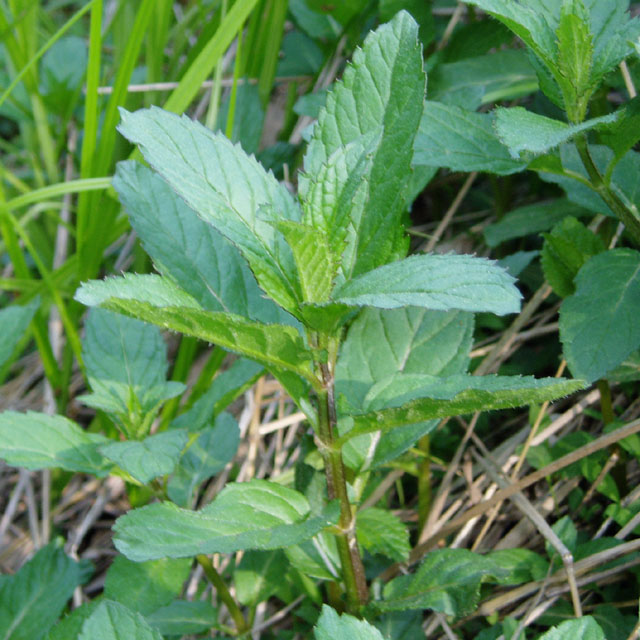
Una de las plantas más singulars del reino vegetal, especialmente por su gusto picante y por su agradable frescura al paladar. Se multiplica generalmente arrancando las raíces de plantíos viejos, con tal que estén sanas y sin lesion alguna, colocando los golpes en la tierrra (sic) á distancia de medi pié, por los meses de Febrero, Marzo, Octubre y Noviembre.
Sirve la yerbabuena en las ensaladas, salsas, y guisos, siendo un aderezo casi general, que se emplea para sazonar muchos manjares. Es planta <<antielmintica>> que ayuda la digestion…En la América del Norte, en Veracruz y en la Isla de Cuba, hacen uso con mucha frecuencia de una bebida compuesta de ginebra, curacao, azúcar, coñac, y yerbabuena, á la que llamen <<ment-joully…
Yerbabuena, Peppermint:
One of the most singular plants in the vegetable kingdom, particularly for its pungent taste and pleasant freshness on the palate. It is usually reproduced by pulling up the roots of old plants, provided they are healthy and without any injury, and placing the root clumps in the earth at a distance of about half a foot during the months of February, March, October and November.
Serve mint in salads, sauces, and stews, as it is an almost universal seasoning, used to flavor many dishes. It is a plant with antiparisitic properties that helps digestion…In North America, in Veracruz and in the Island of Cuba, they frequently prepare a drink composed of gin, curacao liquor, sugar, brandy, and mint, which they call ment joully (possibly mint julep?)…
Unfortunately, this entry might complicate, rather than clarify the question of what kind of mint to use.
Does the title indicate that the author categorizes yerbabuena and menta piperíta as exactly the same plant? Or is he simply subsuming them in the same entry because they are similar species within the genus of mint?
If the former, then the mint that the trout recipe call for would be peppermint (which is the usual translation for menta piperíta; its scientific name is Mentha Piperita). However, several other explanations that I’ve read explicitly state that yerbabuena as spearmint, a distinct species from peppermint. A third possibility might be that yerbabuena is a general term used to refer to any mint, with the specific species is left to the discretion of the cook. That might explain why–despite the dual title–the text of the article consistently uses the noun “yerbabuena.”
In all likelihood, either peppermint or spearmint would produce a tasty trout dish. However, in addition to illustrating the advantages of cooking from culinary dictionaries and encyclopedias, this recipe also demonstrates the ambiguity that can be revealed in even seemingly short and simple ingredient lists.

